An Interview With Illustrator David Croland
David Croland has an active career in art and fashion. His illustrations can be found in Vogue, Bazaar, Interview, and The New York Times, among other publications. His drawings are also commissioned by department stores such as Barneys New York and Henri Bendel, as well as numerous beauty companies. As a photographer, his work appears in Glamour and British Vogue. Mr. Croland has depicted some of the fashion industry’s most famous muses and designs. His dynamic c. 1992 drawing of a woman’s face was chosen as the iconic image for Inspired Eye: The Donald and Joan Damask Design Collection at the FIDM Museum, on view through December 19. Exhibition Curator Christina Johnson interviews him below.
Were you taught how to draw, or is it something that happened organically? What about photography and prints—did you have formal training in these media? How did you discover your own talent?
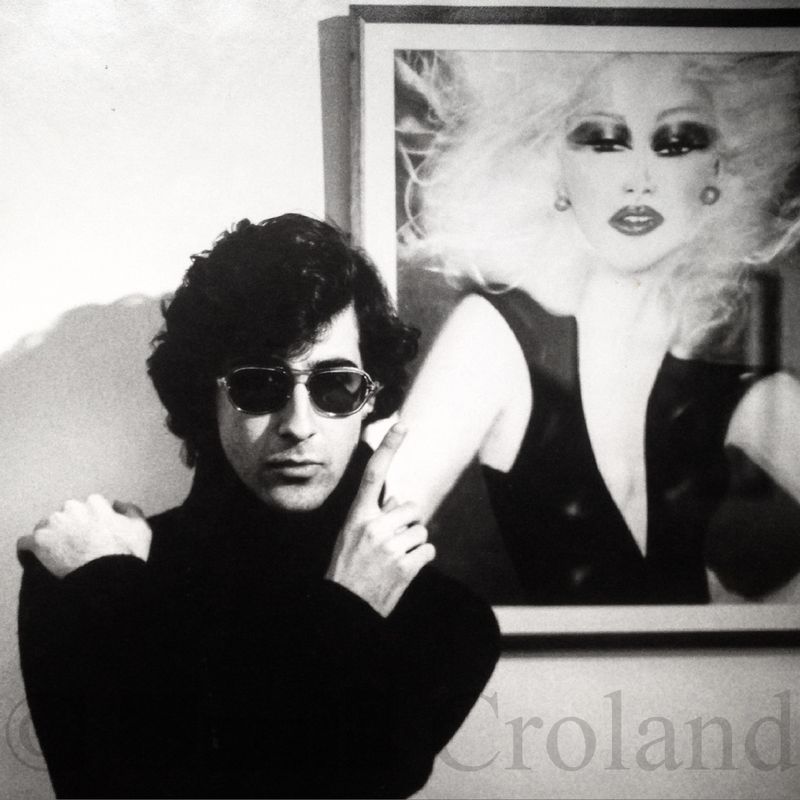
David Croland with his portrait of Donna Jordan done for Chris von Wangenheim in 1972
I drew since early childhood—art was always my favorite class. My parents always encouraged me to draw, paint, and do anything to do with art. I went to Pratt Institute when I was 17 years old. It was a great creative time to be in New York. That was 1964! I studied interior design before switching to Parsons School of Design in 1966. After that, in 1967, I moved to Paris for a year. It was a great school for glamour!
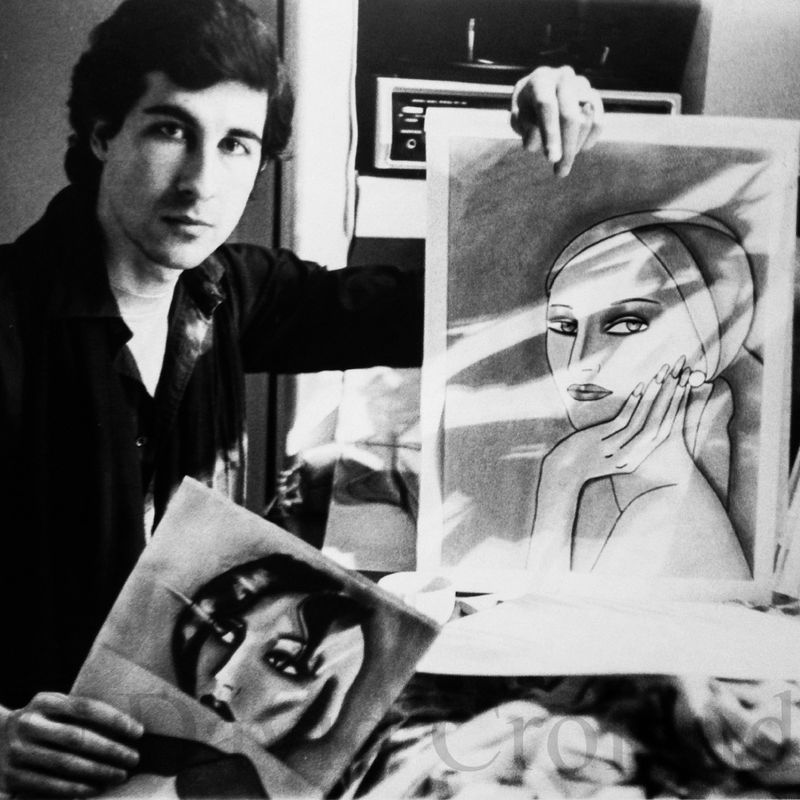
David Croland holding commission for L’Oreal, 1971
Then came New York, where I was a model. After that, London for all of 1969, where I was also a model. That’s where my illustration career began. My first assignments were full-page beauty illustrations for Harper’s Bazaar and drawing the Paris collections. After London, I moved back to New York and the illustration career took off. Lots of work for Harper’s Bazaar, Vogue, and many cosmetic companies. I was asked by Halston to do portraits of his best friends Marisa Berenson, Loulou de la Falaise, Elsa Peretti, and many more in 1970.
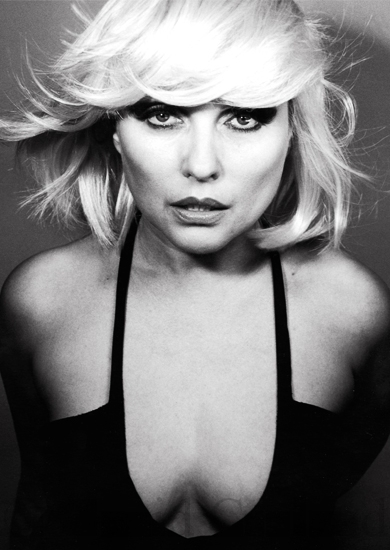
David Croland, Debbie Harry, Photograph, early 1990s
Please tell us about the drawing of the woman’s face that we chose for the exhibition’s brand. Why was it made? Was there a specific inspiration or muse? Looking at it today, what do you like about it?
The drawing in your show was done for Henri Bendel as part of a shop where I painted the walls with my drawings and that face was used as a poster. Donald Damask was the creative director and Geraldine Stutz was the boss. The drawing was a bold, graphic image that I believe spoke for the time and still looks fresh today.
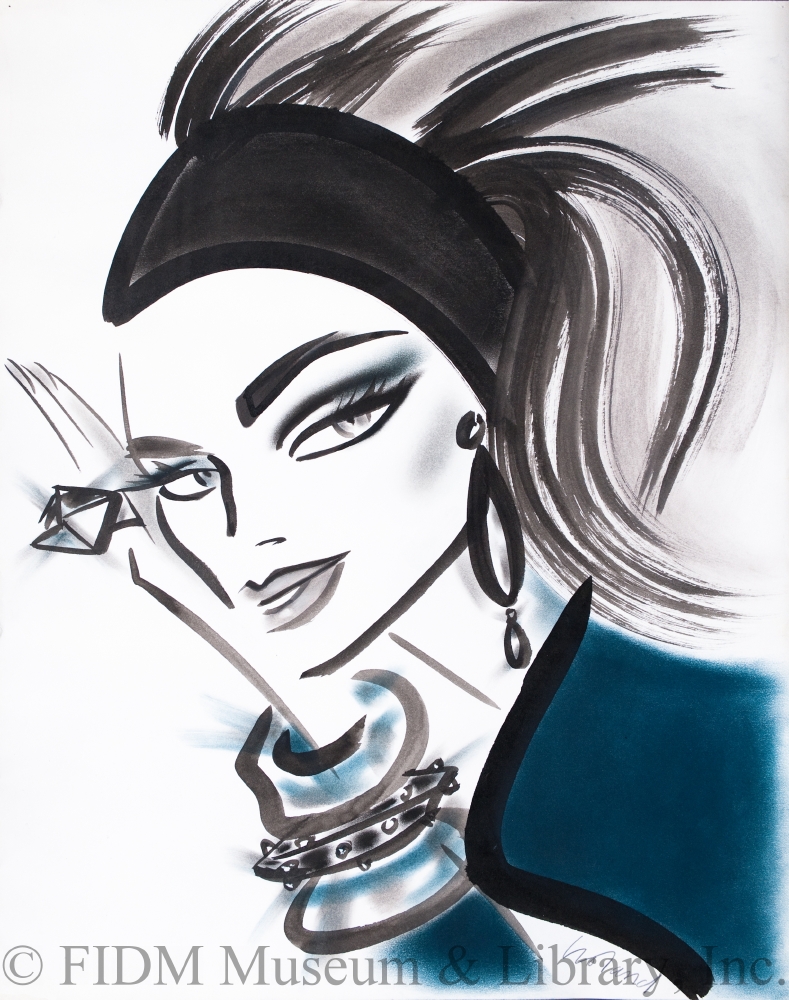
David Croland, Illustration, 1992. FIDM Museum Collection. Gift of Joan Beer Damask and Donald Damask
Today, photography is more prevalent in fashion magazine editorials and advertisements than drawings are. Why do you think this is? How do drawings communicate differently than photographs?
Drawings have a fantasy element that speaks to individuals in a different way than photos. Less literal. More dreamlike, and they take the viewer on a different trip.
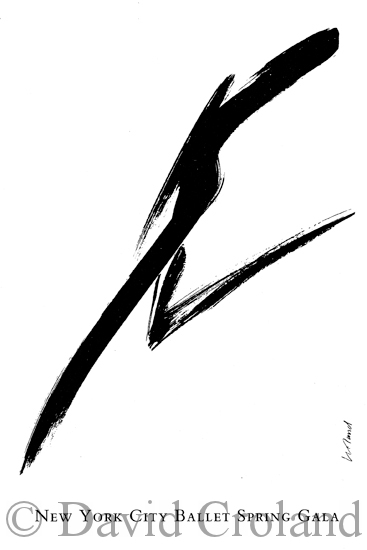
David Croland, Illustration, New York City Ballet Gala Poster, early 1990s
What are the pros and cons of digital photography vs. traditional film photography? How does the experience as photographer and sitter differ?
All good photography is based in the light the photographer uses. Digital or film, it is so much about how the light is on the model--daylight, tungsten, or flash. It's the light, location, and the attitude of the photographer and the model and how they click together to create an inspiring, interesting image.
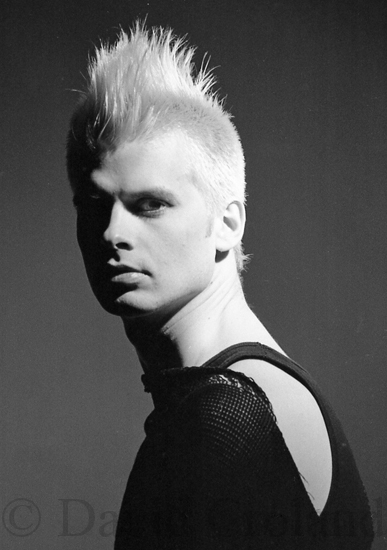
David Croland, Photograph, 2000
Would you describe some of your favorite projects or most memorable clients?
I have worked for so many clients. The Halston portraits took one year to complete, because he kept adding women that inspired him to the list. That kept me busy and inspired also.
It was always fun to do fashion previews for Vogue, Bazaar, and Elle where I would be booked for a week at the magazine to work with the editors and editor-in-chief to create images of the clothes, shoes, bags, and jewelry that were not yet in the stores. These would be sent out in the fashion world to inspire and inform people of the coming looks for each season.
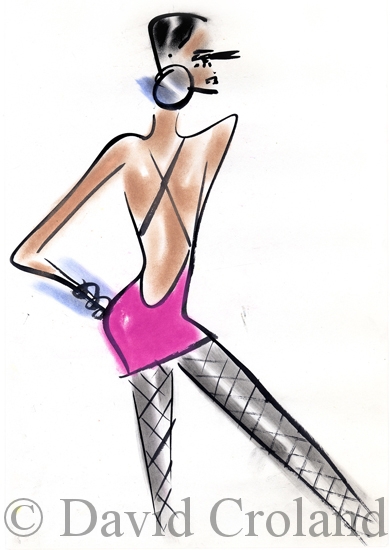
David Croland, Fashion illustration, late 1990s
Where do you find your inspiration today?
Beauty of all sorts inspire me. In the eye of the beholder. . . . Nature. The ocean, space, colors, the elaborate. Couture, ballet, museums. People, animals, vistas, and new views in new places.
What advice would you have for our students who would like to become photographers or illustrators in today’s fashion industry?
To students of any age, I would say: draw, paint, and create what interests you the most. Look at things from different angles. Go to museums and galleries for inspiration to respect our past and how it connects to the present and to your future.
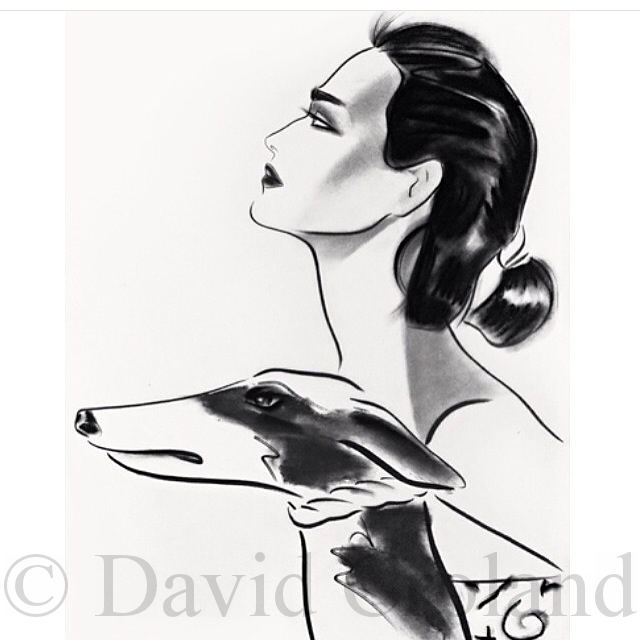
David Croland, Dovanna and Friend, Cover of Hampton’s magazine, early 1980s
You can do great work, and . . . have fun too!
Love,
DC